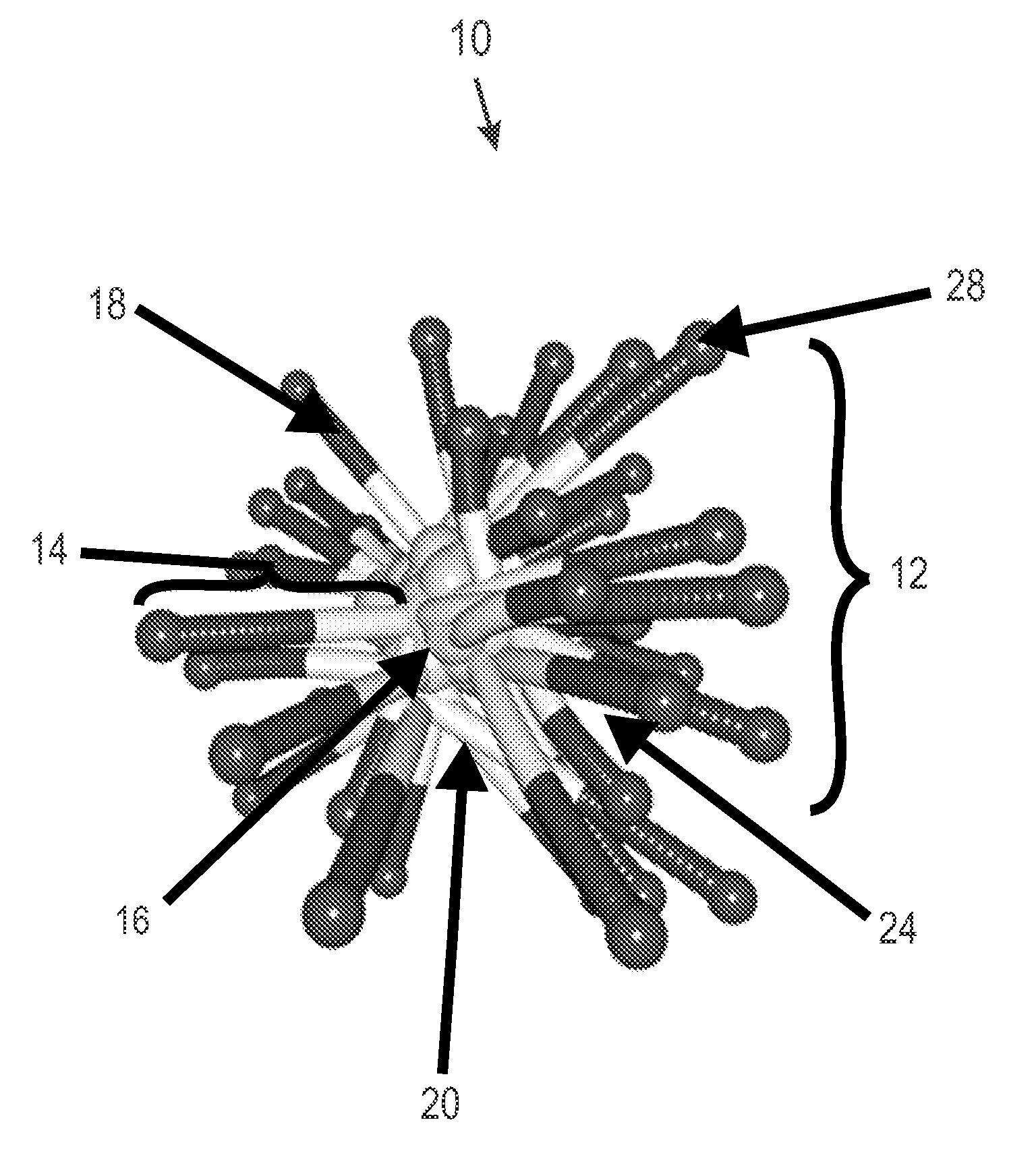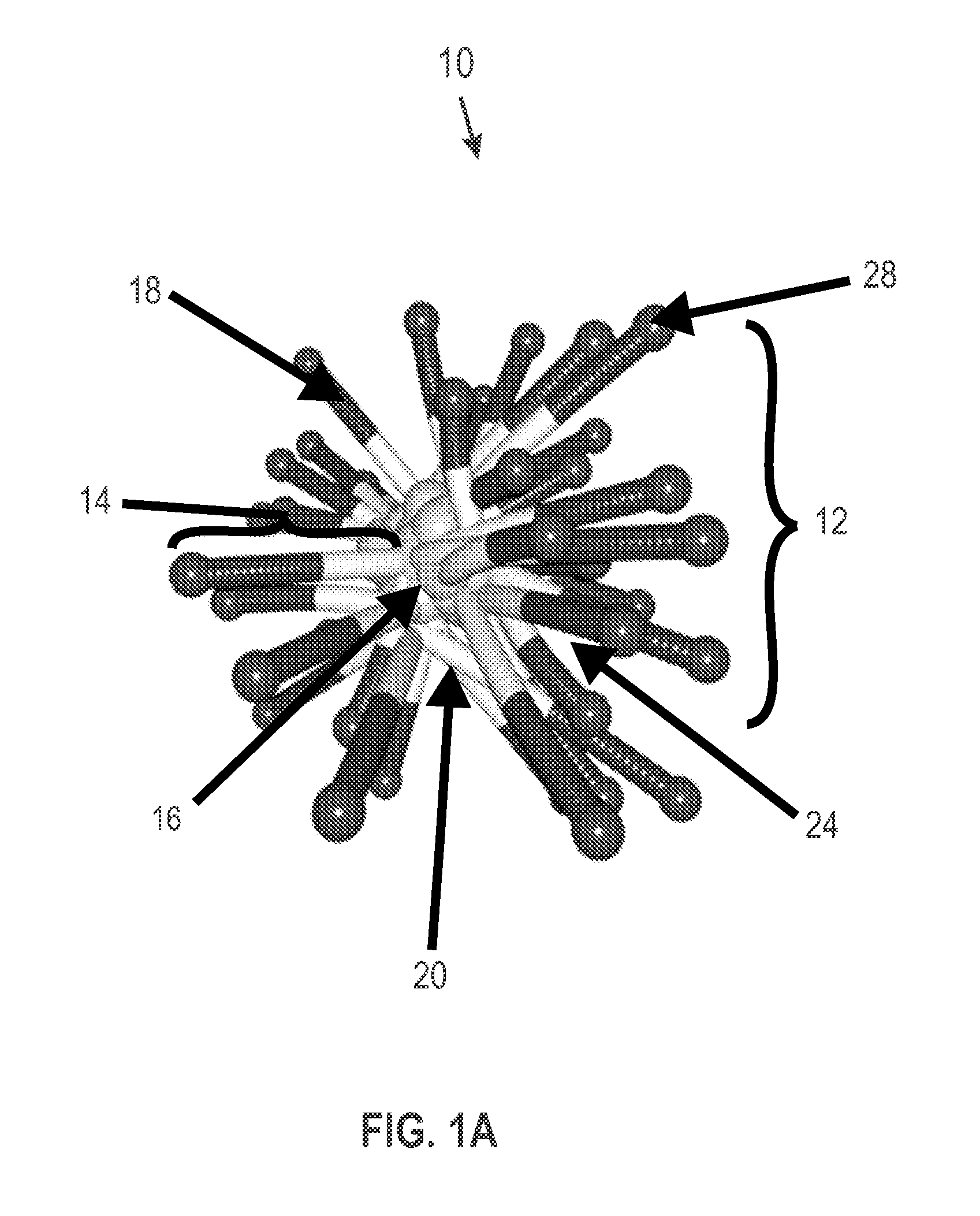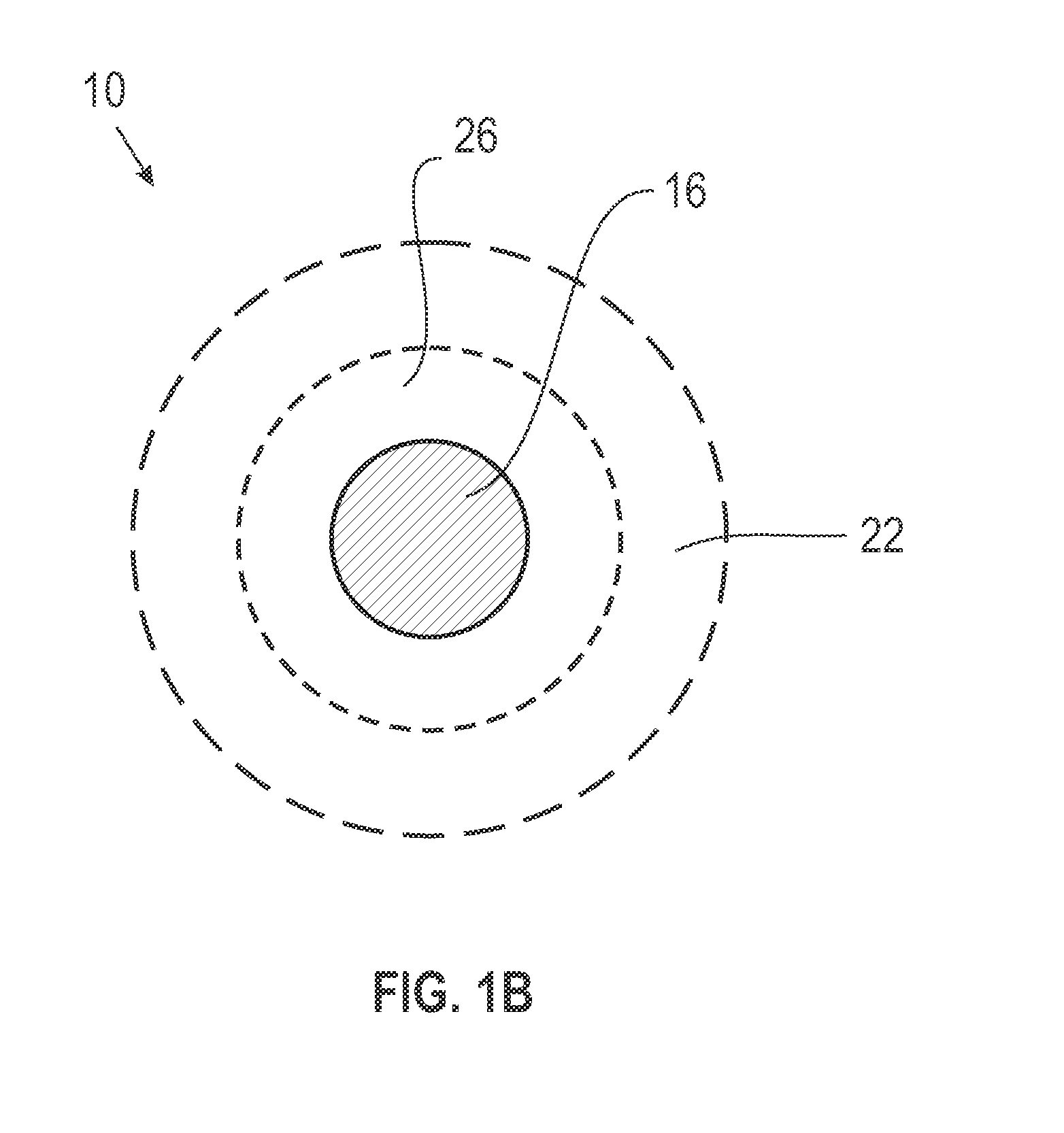Film-forming compositions of self-crosslinkable nanogel star polymers
a technology of star polymer and film-forming composition, which is applied in the field of star polymer film-forming compositions, can solve the problems of reducing the rate of hais, affecting the health of patients,
- Summary
- Abstract
- Description
- Claims
- Application Information
AI Technical Summary
Benefits of technology
Problems solved by technology
Method used
Image
Examples
example 1
Comparative
[0103]The preparation of block copolymer A-1. The preparation of A-1 is representative and was prepared in four steps as shown below in Scheme 3.
[0104]A) 3-(tert-Butyldimethylsilyloxy)-1-propyl lithium (6.6 mL, about 10 wt % (weight percent) solution in cyclohexane) was added to a stirred solution of styrene (12.00 mL) in a cyclohexane (200 mL) and THF (10 mL) mixture under an argon atmosphere. After 20 minutes the polymerization was quenched in degassed MeOH (approximately 150 mL), yielding intermediate polymer IP-1: 1H NMR (400 MHz, CDCl3, delta)=7.12 (br s, 99H), 6.50-6.70 (br m, 66H), 3.45 (br s, 2H), 1.90 (br s, 33H), 1.46 (br s, 66H), 1.03 (br s, 4H), 0.87 (br s, 9H), 0.00 (br s, 6H). Analytical GPC: Mn=3300, Mw / Mn=1.03. These data imply an average degree of polymerization=33.
[0105]B) IP-1 (9.0 g) was dissolved in THF (90.0 mL) and tetrabutylammonium fluoride (Bu4N+F−) (1.0 M solution in THF, 10.0 mL) was added. The reaction solution was stirred for 24 hours at room...
example 2
Comparative
[0108]Preparation of block copolymer A-2.
[0109]Block copolymer A-2 was prepared by quaternizing A-1 using methyl bromide. A-1 (0.10 g) was dissolved in anhydrous dichloromethane (5.0 mL) before the addition of methyl bromide (0.10 mL). The reaction was stirred overnight at room temperature under a nitrogen atmosphere. The precipitate thus formed was isolated by filtration and washed with dichloromethane (3×10 mL) and air dried to a constant mass to afford the cationic block copolymer A-2 as a white amorphous powder. 1H NMR (400 MHz, MeOD, delta)=7.13 (br s, 99H), 6.50-6.60 (br m, 66H), 4.63 (br s, 66H), 4.06 (br s 66H), 3.45 (br s, 297H), 2.07 (br s, 132H), 1.4-0.8 (br m, 132H).
example 3
Comparative
[0110]Preparation of block copolymer A-3.
[0111]Block copolymer A-3 was prepared by quaternizing A-1 using benzyl bromide. A-1 (0.10 g) was dissolved in anhydrous dichloromethane (5.0 mL) before the addition of benzyl bromide (0.10 mL). The reaction was stirred overnight at room temperature under a nitrogen atmosphere. The precipitate thus formed was isolated by filtration and washed with dichloromethane (3×10 mL) and air dried to a constant mass to afford the cationic block copolymer A-3 as a white amorphous powder. 1H NMR (400 MHz, MeOD, delta)=7.75-7.55 (br, m, 165H), 7.13 (br s, 99H), 6.50-6.60 (br m, 66H), 4.63 (br s, 66H), 4.06 (br s 66H), 3.45 (br s, 264H), 2.07 (br s, 132H), 1.4-0.8 (br m, 138H).
Preparation of Star Polymers
[0112]The following star polymers were prepared by and are named with the prefix SP to denote star polymer. Intermediate star polymers are denoted by the prefix ISP. In the analysis, Rh denotes the hydrodynamic radius.
PUM
| Property | Measurement | Unit |
|---|---|---|
| hydrodynamic radius | aaaaa | aaaaa |
| glass transition temperature | aaaaa | aaaaa |
| thickness | aaaaa | aaaaa |
Abstract
Description
Claims
Application Information
 Login to View More
Login to View More - R&D
- Intellectual Property
- Life Sciences
- Materials
- Tech Scout
- Unparalleled Data Quality
- Higher Quality Content
- 60% Fewer Hallucinations
Browse by: Latest US Patents, China's latest patents, Technical Efficacy Thesaurus, Application Domain, Technology Topic, Popular Technical Reports.
© 2025 PatSnap. All rights reserved.Legal|Privacy policy|Modern Slavery Act Transparency Statement|Sitemap|About US| Contact US: help@patsnap.com



